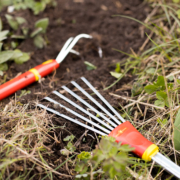Summer in the city…how does your urban lawn cope?
Summer in the city…how does your urban lawn cope?: Ahhhhh…at last it feels as if summer may have finally arrived! The Lawn Association team love the sun, but how will your lawn cope, especially if you are living in an urban area?
We sometimes take grass and lawns for granted but our weather patterns are changing so we need to adjust constantly to keep up. Here are just some things to think about for your urban lawn and how to look after it in the summer heat.

Summer in the city…how does your urban lawn cope?
Keep it real, of course!
It may be stating the obvious but the Lawn Association is NO fan of fake turf! While artificial grass may seem like a convenient choice for gardens, it comes with significant drawbacks. Unlike natural turf, fake grass and its underlying materials cannot efficiently absorb heavy rainwater, support wildlife and plant life, or remove CO2 and pollutants from the air. Furthermore, it fails to reduce temperatures during hot summers and does not withstand flooding, as evidenced by artificial football pitches being washed away. Additionally, its inability to be recycled easily only contributes to unnecessary and potentially toxic landfill.
Size can matter!
The size of your garden and the species of grass chosen are of the utmost importance when it comes to a tough, hardy, yet beautiful lawn. One thing the Lawn Association is a MASSIVE fan of is the use of native grass species. The main issues with small gardens, in fact, any size garden to be honest, arise from the use of ryegrass, originally sold for its strength, its fast germination and its good colour. But ryegrass was never intended for lawns and wasn’t used in lawns before the 1990s. And it has NO place in them today.
Our two main native grasses (bent and fescue) are given to us by nature so making those two a choice for your lawn is essential.
Remember no grasses like to grow as much in the UK as native grasses!
Looking a bit shady?
Even small trees play a crucial role in today’s gardens by absorbing CO2, emitting oxygen, purifying the air, and supporting vital biodiversity. Tree shade and leaf fall are cited as real problems for grass and other garden plants. In fact, every keen lawn owner would go as far as removing trees for their lawn to succeed. But at the Lawn Association, is is all about sustainability – and we think they’re a match made in heaven!
“The right tree,” explains David Hedges Gower, chairman of The Lawn Association, “can help by preventing the searing midday sun from scorching the grass around it. Then, if you really must water your lawn,
I can guarantee there’ll be one large patch that won’t need it!”
But what is the right tree? You want one that fits aesthetically without dominating the space. You need a tree that allows sufficient dappled light to penetrate the branches. And you can always choose evergreen varieties if you really don’t want to rake up autumn leaves. A well-chosen tree is a really useful ally, part of nature’s own sustainable and balanced way of keeping everything in the garden as healthy and natural as possible.
For the latest industry news visit landscapingmatters.co.uk/news
Get all of the big headlines, pictures, opinions and videos on stories that matter to you.
Follow us on Twitter and Instagram for fun, fresh and engaging content.
You can also find us on Facebook for more of your must-see news, features, videos and pictures from Landscaping Matters












